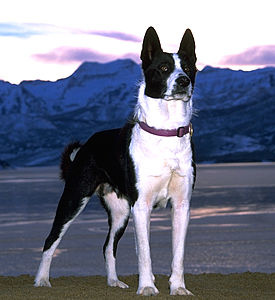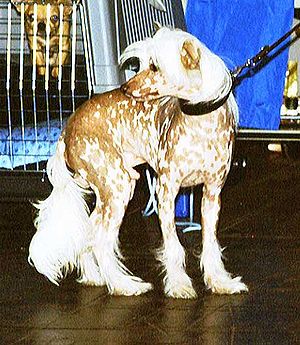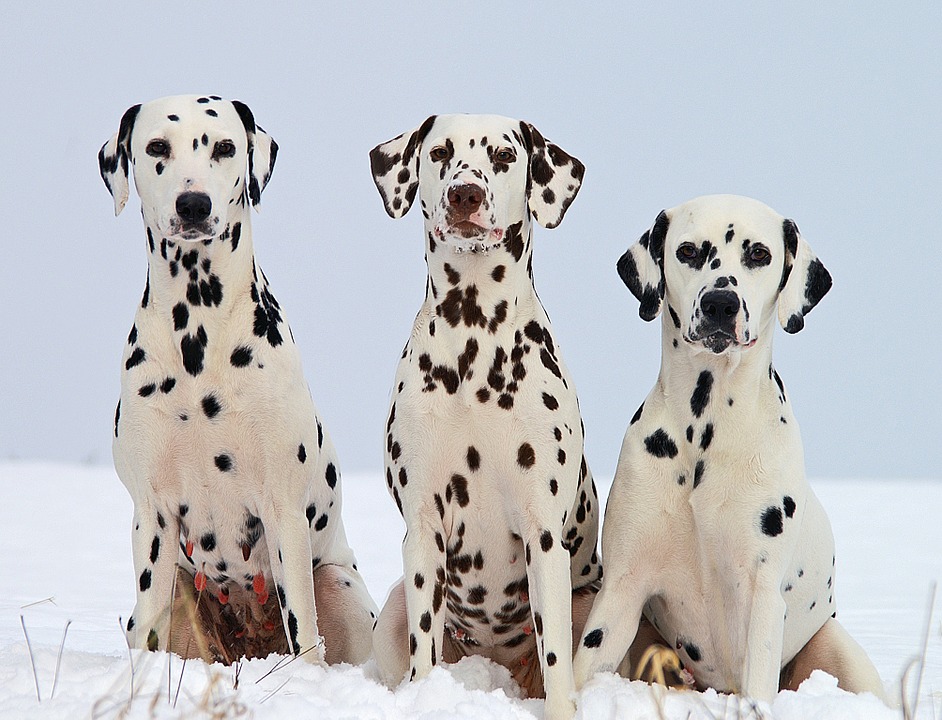 |
| Vital Statistics: |
| Place of Origin: Finland |
| Group: Hunting Dogs, Guard Dogs |
| Height: males 22-24 in., females 19-22 in 5-6 in. |
| Weight: 44-50 lbs. |
| Life span: 10-12 yrs. |
| Trainability: moderate |
| Good with children: yes, with early socialization |
| Good with other pets: no due to aggressiveness |
What is the origin of the Karelian Bear Dog?
The Karelian Bear Dog originated in Northwest Europe. It was originally owned by Russian and Finnish peasants and used for hunting and as a guard dog. Only the hardiest of the breed survived the harsh conditions of the region. The Karelian is native to Finland and one of the most common breeds there.
What does the Karelian Bear Dog look like?
The Karelian males are 22-24 inches tall and females are 19-22 inches tall. Weight is 44-50 lbs. Ears are small and point outwards. Eyes are small. The tail is curved over the back. The coat is straight and stiff with a soft, thick undercoat. Color is black with white markings. Weekly brushings keep the coat neat.
What is the temperament of the Karelian Bear Dog?
Karelians are brave and independent. They should have early socialization and training with a kind but firm hand. They are often aggressive with other dogs. Karelians are very loving and loyal with their family, but because they can play roughly, are not recommended for families with small children. They are very territorial and will sound the alert if anyone, human or animal approaches. However they will warmly welcome those they know although wary of strangers. If Karelians feel threatened by another animal, they are capable of killing it. They need lots of exercise and running room and are not good pets for apartment dwellers.
They usually bond very strongly with one person and need a human experienced with handling dogs with strong personalities.
What is the Karelian Bear Dog used for?
Karelians are tenacious hunters and can even hold bears at bay for a long time. Because they can be aggressive with other dogs, it’s best to have only 2 together when hunting. They bond closely with their families. They are being used help keep bears away from population centers. The bears are humanely captured and let loose in remote areas.
Possible Health Issues
No serious issues, umbilical hernia, monorchidism (one testicle).
- American Cocker Spaniel
- Boykin Spaniel
- Bracco Italiano
- Brittany Spaniel
- Chesapeake Bay Retriever
- Clumber Spaniel
- Curly-coated Retriever
- Dalmatian
- English Setter
- English Springer Spaniel
- German Shorthaired Pointer
- Gordon Setter
- Irish Red & White Setter
- Japanese Akita Inu
- Kai Ken Dog
- Labrador Retriever
- Lagotto Romagnolo
- Llewellyn Setter
- Mountain Cur
- Nova Scotia Duck Tolling Retriever
- Picardy Spaniel
- Pudelpointer
- Russian Spaniel
- Spinone Italiano
- Vizsla
- Weimaraner
- Welsh Springer Spaniel
- Welsh Terrier
- Wetterhoun
- Wirehaired Pointing Griffon
- Wirehaired Vizsla
- Akbash Dog
- Anatolian Shepherd Dog
- Black Russian Terrier
- Boerboel
- Bullmastiff
- Burnese Mountain Dog
- Ca de Bou
- Cane Corso
- Chinese Shar-Pei
- Chow Chow
- Estrela Mountain Dog
- Fila Brasileiro
- Giant Schnauzer
- Great Pyrenees
- Hokkaido Dog
- Kai Ken Dog
- Kangal Dog
- Kerry Blue Terrier
- Komondor
- Kuvasz
- Mastiff
- Neapolitan Mastiff
- Norwegian Elkhound
- Presa Canario
- Pyrenean Mastiff
- Rafeiro do Alentejo
- Rhodesian Ridgeback
- Rottweiler
- Sanshu
- Shikoku Inu
- Tibetan Mastiff
- Tosa Ken



